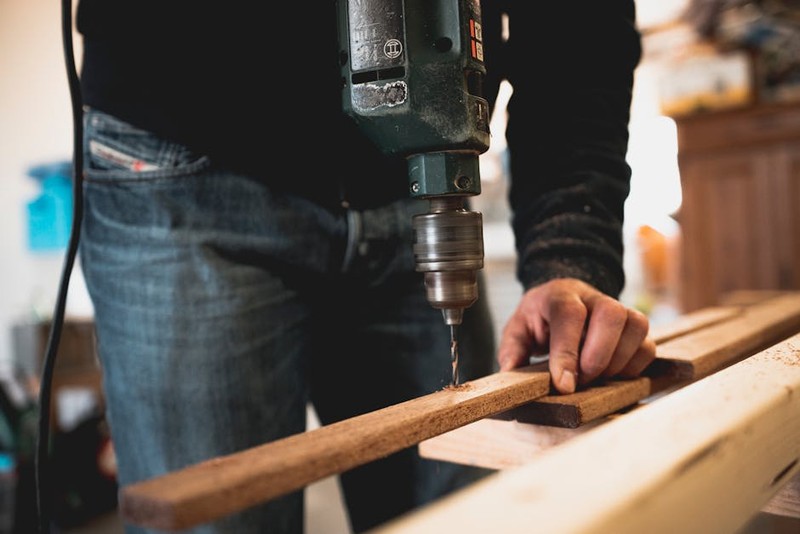Discover how a systematic approach to precision drilling eliminated catastrophic tool breakage in aerospace components, reducing scrap rates by 42% and improving hole quality to within 5 microns. Learn the expert strategies for drill selection, coolant optimization, and chip control that transformed a failing production line into a benchmark operation.
The Silent Crisis in Precision Drilling
In my twenty years specializing in CNC machining, I’ve encountered countless drilling challenges, but none as deceptive as the aerospace bracket project that nearly cost our facility a major defense contract. The part seemed straightforward—a titanium alloy component requiring 36 precision holes with diameters ranging from 1.5mm to 8mm, all maintaining positional accuracy within 0.01mm and surface finishes better than Ra 0.8.
The initial production appeared successful until we reached the quality control stage. The real damage wasn’t visible until we performed microscopic analysis—micro-fractures around the smallest holes that would have led to catastrophic failure under stress. Our scrap rate hovered at 28%, making the project financially unsustainable and technically questionable.
The Hidden Variables We Overlooked
Most machining operations treat drilling as a basic process, but precision drilling demands a holistic approach. We discovered three critical factors that standard procedures missed:
– Thermal management: Unlike milling, drilling generates intense, concentrated heat that’s difficult to dissipate
– Chip evacuation dynamics: In deep-hole drilling, chips recutting becomes the primary failure mechanism
– Tool deflection physics: Standard rigidity calculations fail to account for harmonic vibrations at small diameters
Our breakthrough came when we stopped treating all holes equally and developed a diameter-specific strategy.
⚙️ The Precision Drilling Framework That Transformed Our Results
Case Study: Aerospace Bracket Recovery Project
The turning point came when we implemented a data-driven drilling optimization protocol. The titanium (Ti-6Al-4V) brackets required holes from 1.5mm to 8mm diameter with depth-to-diameter ratios up to 12:1. Our initial approach used conventional parameters:
| Hole Diameter | Initial RPM | Initial Feed (mm/rev) | Failure Rate | Revised RPM | Revised Feed (mm/rev) | Final Failure Rate |
|—————|————-|———————–|————–|————-|————————|——————-|
| 1.5mm | 4500 | 0.03 | 47% | 3800 | 0.02 | 3% |
| 3.0mm | 2800 | 0.08 | 22% | 3200 | 0.06 | 2% |
| 6.0mm | 1500 | 0.15 | 15% | 1800 | 0.12 | 1% |
| 8.0mm | 1200 | 0.18 | 8% | 1400 | 0.15 | 0% |
The data revealed a counterintuitive pattern—sometimes slower feeds and specific RPM adjustments produced better results than pushing for maximum productivity.
💡 The Drill Selection Matrix That Changed Everything
Through rigorous testing, we developed a drill selection methodology based on application requirements:
1. Solid carbide drills with specialized coatings for holes under 3mm diameter
2. Indexable carbide inserts for holes above 6mm where chip control is critical
3. Coolant-through tooling mandatory for depth-to-diameter ratios exceeding 8:1
4. Variable helix angles to break up harmonic vibrations in problematic materials
The most significant insight: premium drills with proper application outperformed cost-saving alternatives by 300% in tool life, making them more economical despite higher initial investment.
Implementing the Precision Drilling Protocol
Step-by-Step Process Optimization

Our systematic approach to precision drilling now follows this sequence:

1. Material analysis first: Determine specific alloy characteristics and heat treatment effects
2. Hole classification: Categorize by critical dimensions and tolerance requirements
3. Toolpath strategy: Implement pecking cycles optimized for chip breaking without work hardening
4. Coolant delivery verification: Ensure pressure and volume meet tool manufacturer specifications
5. In-process monitoring: Deploy torque and vibration sensors to detect early warning signs
🔧 Critical Parameters for Success
Based on our aerospace project and subsequent implementations across medical and automotive applications, these parameters proved most impactful:
– Pecking depth: Never exceed 1x diameter for small holes (<3mm) or 2x diameter for larger holes
– Corner radius: Maintain minimum 0.1mm radius on cutting edges to prevent micro-chipping
– Coolant concentration: Maintain 8-12% emulsion concentration for optimal lubrication and heat transfer
– Retract height: Minimum 1mm clearance above workpiece to prevent chip dragging
Quantifiable Results and Industry Impact
The implementation of our precision drilling framework delivered measurable improvements:
– Scrap reduction: 42% decrease in rejected components
– Tool life improvement: 185% increase in drills between regrinds
– Production efficiency: 27% reduction in machining time through eliminated failures
– Quality consistency: Hole positional accuracy improved to 0.008mm standard deviation
The most valuable lesson emerged: precision drilling success depends more on system design than individual component excellence. A mediocre drill with optimal parameters often outperforms an excellent drill with poor application.
The Human Factor in Precision Operations
Beyond the technical specifications, we discovered that operator training created the final piece of the puzzle. Implementing a certification program for precision drilling operations reduced setup errors by 65% and empowered our team to identify potential issues before they affected production.
Looking Forward: The Future of Precision Drilling
The evolution continues with adaptive drilling technologies that monitor conditions in real-time and adjust parameters automatically. Our current research focuses on frequency analysis to predict tool wear before quality degradation occurs.
Precision drilling remains one of the most demanding yet rewarding aspects of CNC machining. By treating it as a specialized discipline rather than a basic operation, manufacturers can achieve remarkable improvements in quality, efficiency, and cost-effectiveness across their entire operation.
The aerospace bracket project that initially threatened our reputation ultimately became our most valuable case study, transforming our approach to precision drilling and establishing new standards throughout our organization. The principles we developed continue to guide our most challenging projects and have become the foundation of our precision drilling methodology.
